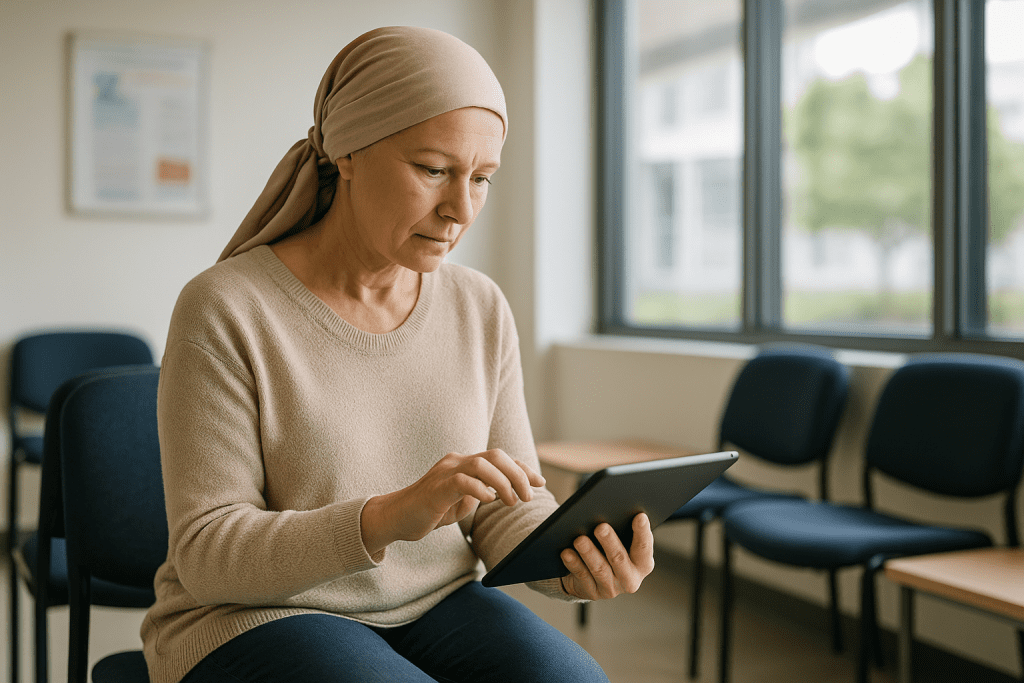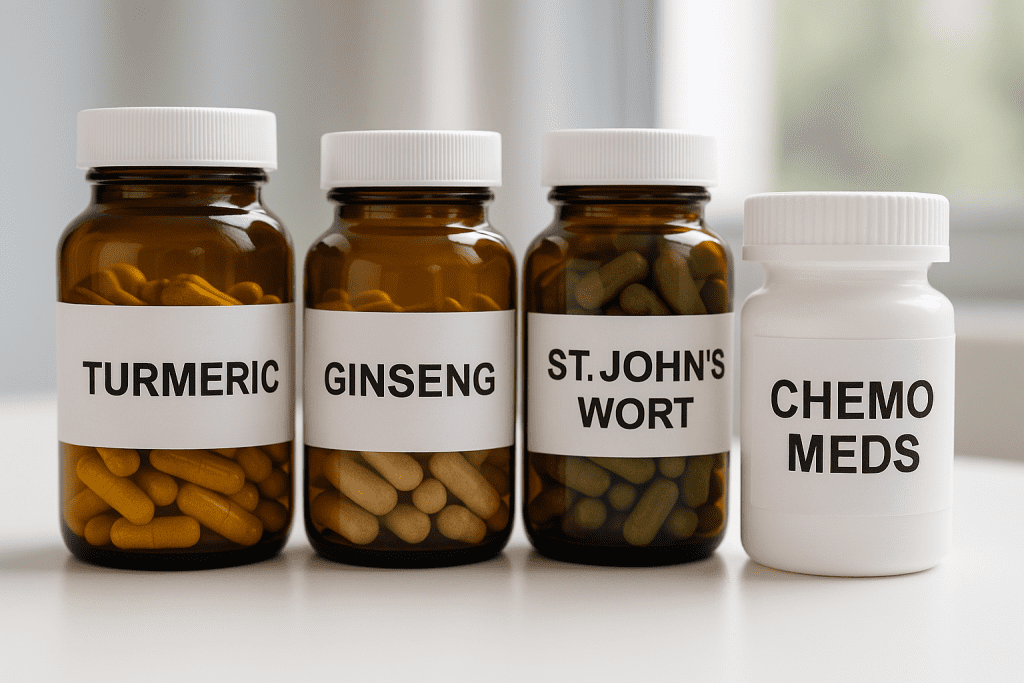
For cancer patients undergoing chemotherapy, herbal supplements can be a hidden risk. While many turn to natural remedies to relieve side effects or improve wellness, certain herbs can interact dangerously with chemotherapy drugs.
This article explores the most trusted herbal chemo interaction checker apps—specialized tools designed to reduce those risks and guide patients toward safer supplement choices.
If you’re looking for an easy-to-use, science-backed herb-cancer drug conflict app, you’re in the right place.
Summary / Quick Answer
Need a reliable herbal chemo interaction checker? These two apps stand out:
- About Herbs (Memorial Sloan Kettering Cancer Center)
- Over 290 herb profiles with interaction data
- Designed for cancer care teams and patients
- Updated weekly by experts
- HerbList (NIH/NCCIH)
- 50+ common herbs
- Research summaries for the public
- Useful in general cancer supplement safety reviews
These tools help cancer patients avoid herb-drug conflicts during chemotherapy. Always consult your oncologist before starting any herbal product.
Why Cancer Patients Need Interaction Checkers
Many herbs commonly used by cancer patients can interfere with chemotherapy. Think of:
- Garlic (can thin the blood)
- St. John’s Wort (alters drug metabolism)
- Ginseng, echinacea, milk thistle, and grapefruit juice
These herbs can either block or intensify drug effects, sometimes dangerously. Chemotherapy often has a narrow therapeutic window, meaning small changes in drug levels can lead to treatment failure or serious side effects.
A 2023 study in Cancer Research Communications found that up to 89% of patients using supplements may face potential interactions, depending on the specific herb and detection method. For more details on how common drug conflicts arise, see our Cancer treatment supplement interaction checker.
About Herbs: The Gold Standard for Onco Herbs Tools

What It Offers
The About Herbs app from Memorial Sloan Kettering is the most respected onco herbs tool available. It offers:
- Over 290 entries covering herbs, botanicals, and supplements
- Peer-reviewed interaction summaries
- Dual views: simplified for patients, clinical for professionals
- Offline access and PubMed references
- Weekly updates by trained pharmacologists
Clinical Use
At Memorial Sloan Kettering, this app is integrated into patient care through the Herbal Oncology Program (HOP). Oncologists use it to guide decisions and flag risks during consultations. For example, if a patient reports turmeric use during treatment, clinicians can reference interaction data directly. (Also see: Turmeric supplements and chemotherapy efficacy).
App Store Access
| Feature | About Herbs (MSKCC) |
|---|---|
| Target Audience | Cancer patients & providers |
| Interaction Depth | Clinical + layperson info |
| Number of Herbs | ~290 |
| Curation Frequency | Weekly updates |
| Evidence Base | PubMed-linked references |
HerbList: A General Herbal Checker for Cancer Patients
What It Offers
Created by the NIH/NCCIH, HerbList isn’t specifically designed for cancer, but covers:
- 50+ of the most-used herbs
- Potential interactions and side effects
- Safety summaries and references
- Offline access and user-friendly search
This app draws from the NIH’s “Herbs at a Glance” library and is best for patients seeking basic, research-supported overviews.
Limitations
Unlike About Herbs, HerbList does not offer oncologist-facing details or in-depth interaction warnings. But it can serve as a reliable first-check resource, especially when professional input is delayed.
| Feature | HerbList (NIH) |
| Target Audience | General public |
| Number of Herbs | ~50 |
| Interaction Alerts | General risk flags |
| Evidence Base | NIH sources only |
Where to Get It
Do These Apps Actually Prevent Harm?

Real-World Impact
Research suggests they do. In a clinical trial of tablet-based interaction tools, over 17% of chemotherapy patients were flagged for potentially serious herb-drug conflicts. Every flagged case led to therapy modification. This shows how digital tools can drive real-time medical decisions and boost safety.
A separate observational study found that 53% of patients using supplements during chemotherapy were exposed to herbs known to affect drug-metabolizing enzymes like CYP450.
Evidence Gaps
Still, even the best apps face a major challenge: incomplete evidence. A British Journal of Clinical Pharmacology review found that only 13% of reported herb-drug interactions were well-documented. The rest lacked patient-specific details or reproducible outcomes.
That’s why it’s critical to pair these apps with clinical advice.
For example, St. John’s Wort birth control failure stories underscore how a common herb can severely impact drug efficacy, especially with CYP3A4-mediated metabolism.
Limitations to Keep in Mind
App Availability & Scope
Few apps exist that are both cancer-specific and herbal-aware. Aside from About Herbs, most other tools are general-purpose, and may not be adequate for chemotherapy interactions. That includes some paid commercial apps that lack strong evidence vetting.
UX & Navigation
Both apps are free and usable offline, but patient reviews suggest room for improvement in:
- Search by disease or drug class
- Filter functions (e.g., “safe during chemo”)
- Simplified summaries for older users
These gaps show where the next-gen herb-cancer drug conflict apps could improve.
Conclusion
Reliable herbal chemo interaction checkers are rare but essential. The About Herbs app remains the most trusted, thanks to its cancer-specific insights and real-time clinical use. HerbList serves as a solid secondary tool.
However, apps are only one part of safe supplement use. Professional oversight matters. Always review herb choices with your cancer care team and use digital tools as decision aids, not replacements.
For more insights, see:

